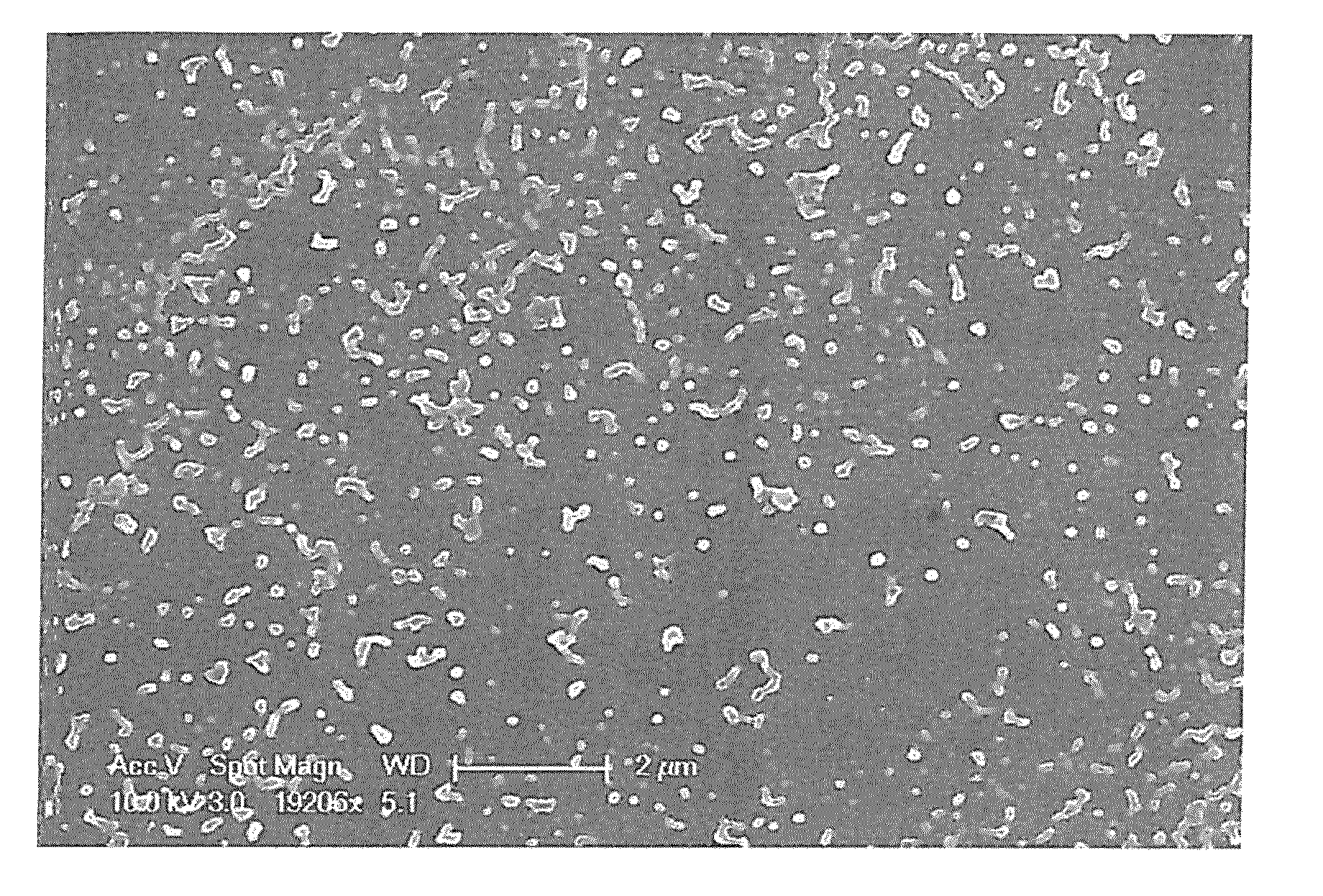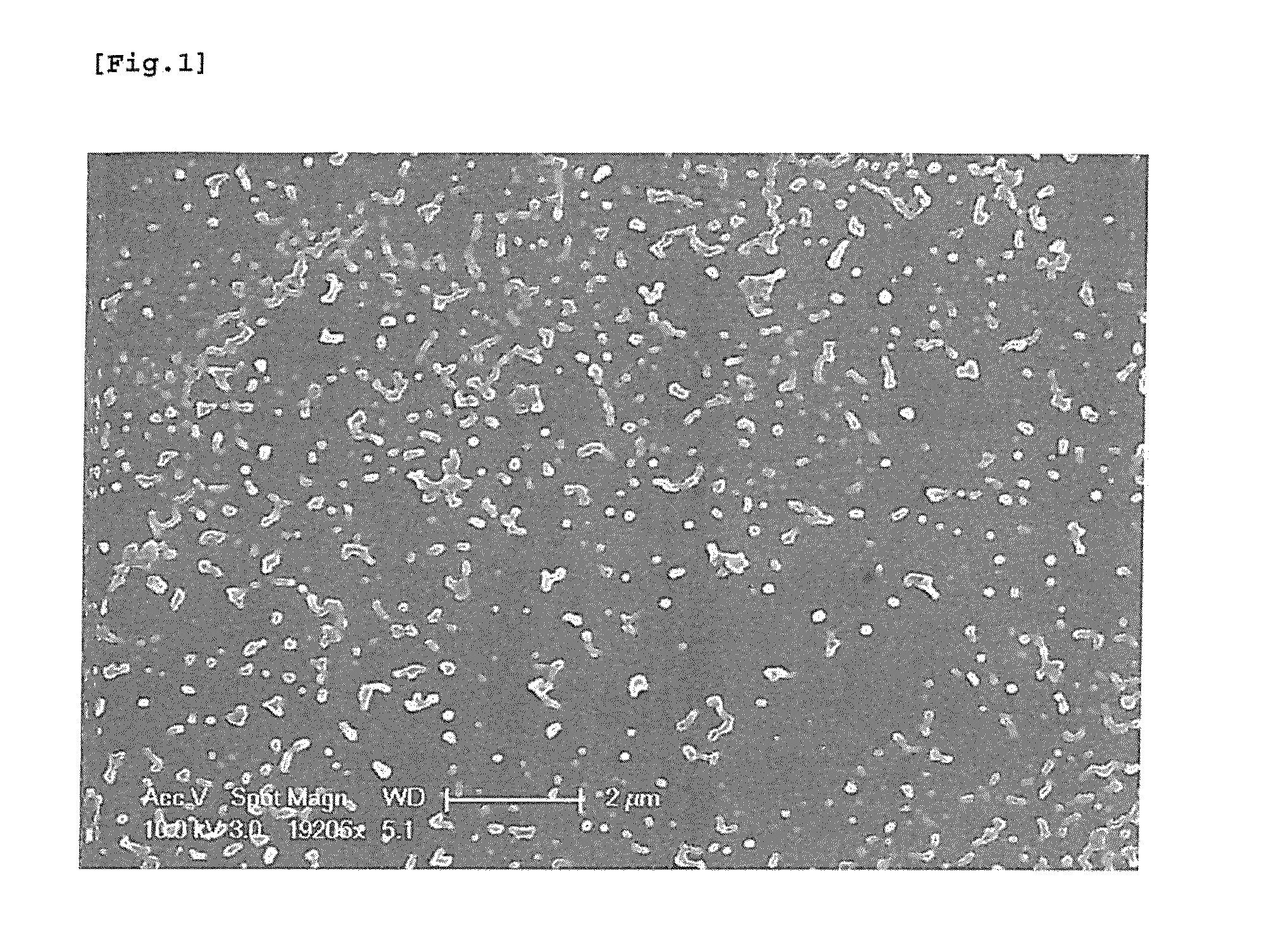Method for manufacturing uniform size polymeric nanoparticles containing poorly soluble drugs
- Summary
- Abstract
- Description
- Claims
- Application Information
AI Technical Summary
Benefits of technology
Problems solved by technology
Method used
Image
Examples
example 1
Preparation of PLGA-BDD Nanoparticles Using DMAc
[0040]10 g of PLGA(poly-D-lactic acid-co-glycolic acid; Boehringer Ingelheim, Germany) was dissolved in 300 ml of Dimethyl acetamide (DMAc), and 1 g of BDD (biphenyl-dimethyl-dicarboxylate) was added and dissolved to prepare a dispersion. Above PLGA-BDD dispersion was added on the 3 l of 4%-PVA (polyvinyl alcohol; Sigma-Aldrich, USA) emulsifier solution in a batch under the condition of low mechanical energy level stirring of 500 rpm for 3 hours.
[0041]After then, the nanoparticles solution was stirred in a container by using a pump-type separation membrane filtration device (Labscale™ TFF System, Millipore, USA) and circulated through a separation pipe by a circulation pump to rapidly remove the emulsifier, the organic solvent and distilled water through a separation membrane filter (Pellicon XL Filter, 500K; Millipore, USA) of the separation membrane, and to concentrate the nanoparticles in a continuous-circulatory concentration manne...
example 2
Preparation of PLGA-BDD Nanoparticles Using DMSO
[0043]100 mg of PLGA was dissolved in 3 ml of DMSO, and 10 mg of BDD was added on it and was dissolved to prepare a dispersion. The above PLGA-BDD dispersion was added on the 30 ml of 4%-PVA emulsifier solution in a batch under the condition of low mechanical energy level stirring of 500 rpm for 3 hours.
[0044]After then, nanoparticles were obtained by the same method as Example 1 through separation concentration and frozen drying. Upon observing the finally obtained nanoparticles through a particle size analyzer, uniform PLGA-BDD nanoparticles containing active ingredients having narrow bounds of particles distribution and a 152 nm of average particle diameter were confirmed. (Refer to Table 1)
example 3
Preparation of PLGA-BDD Nanoparticles Using DMF
[0045]100 mg of PLGA was dissolved in 3 ml of dimethyl formamide (DMF), and 10 mg of BDD was added on it and dissolved to prepare a dispersion. The above PLGA-BDD dispersion was added on the 30 ml of 4%-PVA emulsifier solution in a batch under the condition of low mechanical energy level stirring at 500 rpm for 3 hours.
[0046]After then, nanoparticles were obtained by the same method as Example 1 through separation concentration and frozen drying. Upon observing the finally obtained nanoparticles through a particle size analyzer, uniform PLGA-BDD nanoparticles containing active ingredients having narrow bounds of particles distribution and a 161 nm of average particle diameter were confirmed (Refer to Table 1).
TABLE 1Non-volatilepolarDeviationDeviationDeviationsolventDMAc(±)DMSO(±)DMF(±)Average142.83.3152.44161.63.3particlediameter(nm)
PUM
| Property | Measurement | Unit |
|---|---|---|
| Size | aaaaa | aaaaa |
| Angular velocity | aaaaa | aaaaa |
| Angular velocity | aaaaa | aaaaa |
Abstract
Description
Claims
Application Information
 Login to View More
Login to View More - R&D
- Intellectual Property
- Life Sciences
- Materials
- Tech Scout
- Unparalleled Data Quality
- Higher Quality Content
- 60% Fewer Hallucinations
Browse by: Latest US Patents, China's latest patents, Technical Efficacy Thesaurus, Application Domain, Technology Topic, Popular Technical Reports.
© 2025 PatSnap. All rights reserved.Legal|Privacy policy|Modern Slavery Act Transparency Statement|Sitemap|About US| Contact US: help@patsnap.com



